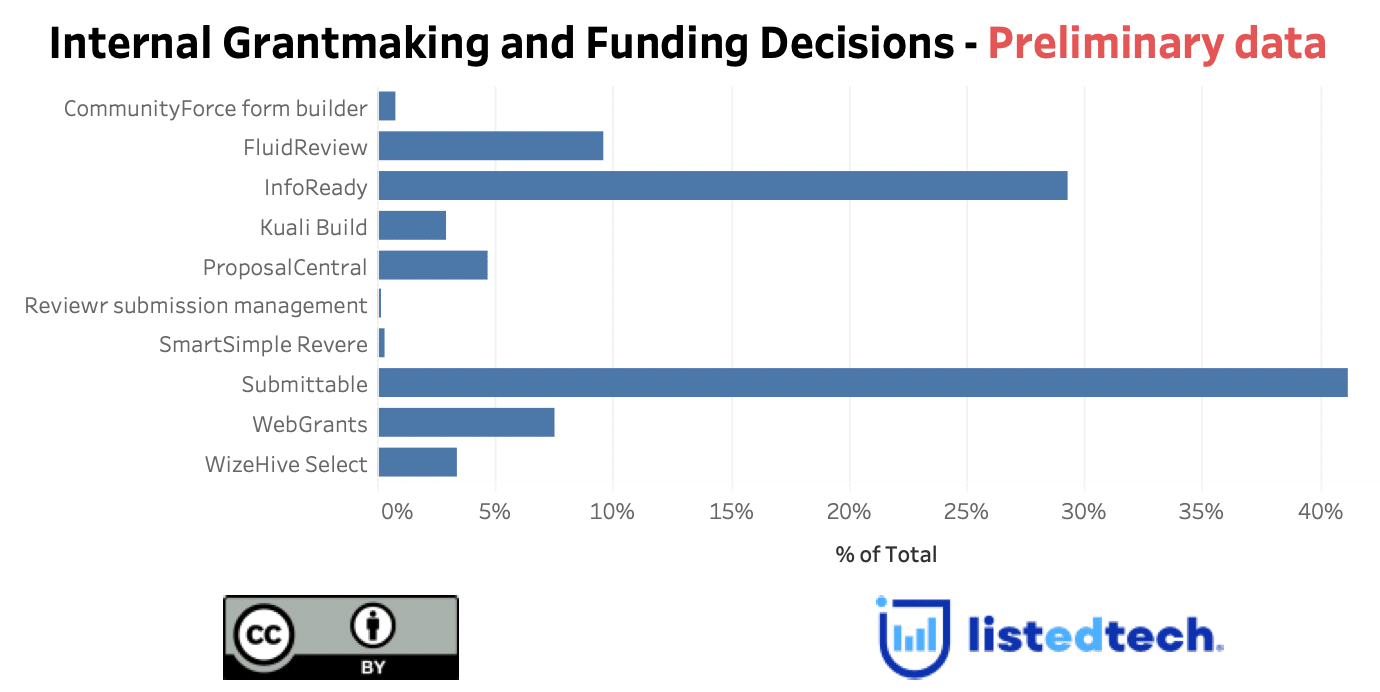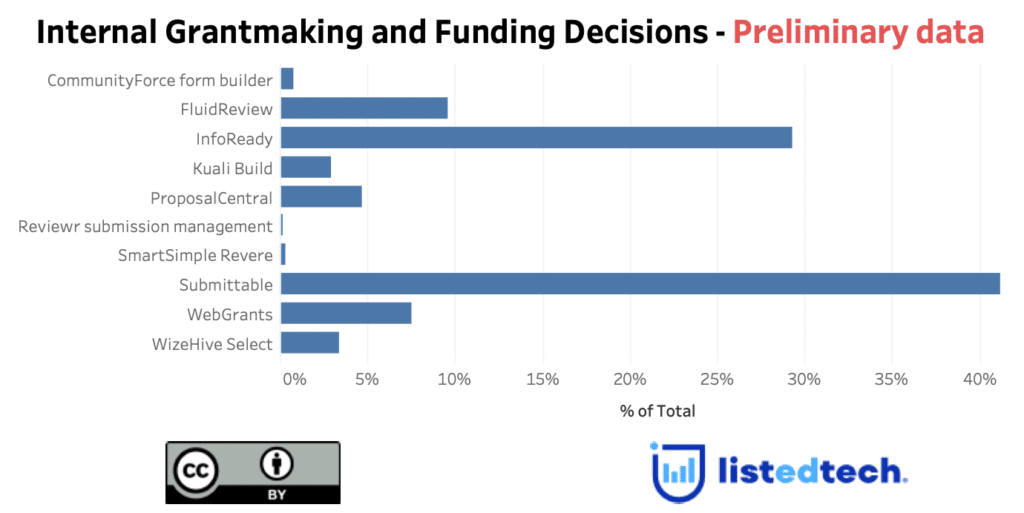
In a few weeks, we will publish our third annual grant report. Each year, we strive to improve our data and knowledge of this product category. Following a conversation with one of the companies in the grantor subcategory (InfoReady), we came to the conclusion that our data and our report needed some tweaking. Here is a sneak peek of our grant report, specifically the grantor subcategory, also known as internal grantmaking and funding decisions.
The grantor subcategory targets the application, review and assessment of funding requests, whether it is for students or for researchers. These software solutions provide varying levels of automation and project management tools to facilitate the smooth process of decision-making in higher education institutions.
Before 2010, this subcategory saw a lot of homegrown systems to manage the workflow of these applications. The market for outsourced, vendor-provided solutions has been steadily increasing as universities expedite initiatives around digital transformation.
Features of Internal Grantmaking Solutions
The software usually automates and streamlines these steps:
- Grant posting: the university posts an invitation to submit applications for a grant, scholarship, or award.
- Application: the applicant completes forms online and attaches any required documents, like resumes, reference letters, budgets, proposals, letters of support, etc. The applicant submits the proposal through the software which is then routed to an administrator.
- Review: reviewers are subject matter experts, or approvers (usually faculty) who provide feedback/decisions on applications assigned to them. The software usually provides some method of recording comments or scoring the applications. Most solutions include automated reminders of deadlines.
- Selection: the software collects the reviews and sends them to the grant administrator within a department, a faculty or the whole university. Based on the administrative procedures in place, the administrator looks at the scores/comments/approval decisions to award the scholarship/grant or reject the application.
- Announcement: through the solution, the university notifies applicants of the decision.
- Progress reports: some of the solutions also feature a follow-up progress report. The awardee declares what they accomplished with their award. Progress reports make it easy to track outcomes, milestones, and ROI.
Without grantmaking software, universities usually use email and spreadsheets to process the submitting, collecting, routing, reviewing, and tracking of applications. Not only is this way of processing applications labour-intensive, but it is also not scalable and could lead to staff burnout.
These point solutions may be connected through APIs or modules to open grant opportunity software (like Ex Libris Pivot-RP) or full grant administration accounting software (like Cayuse).
Nearly all of the current application management solutions available are designed for use by nonprofits, foundations, community relations, government, and corporations with some crossover into the higher education market. Very few are designed to be used by higher education program administrators.
Internal Grantmaking Market
As mentioned earlier, our knowledge of this subcategory grows constantly. Since we have moved some solutions from the grantee (which is the main focus of our grant report) to the grantor (the topic of this post) subcategory, we are still gathering data and counter-verify it with other sources. Consider this data to be preliminary.

The majority of the market solutions do not target HigherEd institutions as their primary clients. They focus on other markets such as hospitals, government agencies, etc. However, Kuali Build and InfoReady focus mainly on the education market.
Solutions that focus more on other markets than HigherEd:
- Amplifund (Streamlink)
- SurveyMonkey Apply (formerly FluidReview)
- Submittable
- WizeHive Zengine
- CommunityForce
- OpenWater App & Review Cloud
- SmartSimple
- SmarterSelect
- Reviewr (UK)
- Elavato (UK)
- Zealous (UK)
- Submit.com (UK)
We would like to thank InfoReady for helping us understand this subcategory.

